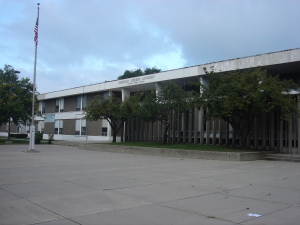Last Tuesday, November 19, Professor Bodurow, Dustin, and I visited Ms. Clay and Ms. Thomas’ third grade students at Sampson-Webber Academy. The afternoon focused on demonstrating the 90 minute lesson I prepared for the class concerning Hybrid Alternative Energy and entitled “Above Ground/Below Ground Energy Collection: Solar and Geothermal Energy”. What a success! It was a wonderful experience working with the students at Sampson-Webber, as I had never had any experience teaching young children prior.
The students spent the afternoon learning about non-renewable and renewable energy, ways to collect solar energy, how geothermal energy works in both summer and winter, and how solar and geothermal energy can occupy the same space and be implemented at their school. After teaching the students about these concepts, we then did several hands-on activities. There was a lot of excitement in the room as students made solar bracelets and created models of a future Hybrid Alternative Energy Sampson-Webber Academy [seen in the wonderful photos captured below].
I would like to thank Principal Houston, Ms. Clay, and Ms. Thomas for allowing me to work with their students, Professor Bodurow for supporting my efforts, and Dustin Altschul for recording and photographing the lesson last Tuesday.
![DSC04232[1]](https://tuswlab.files.wordpress.com/2013/10/dsc042321.jpg?w=300&h=225)

![DSC04203[1]](https://tuswlab.files.wordpress.com/2013/10/dsc042031.jpg?w=300&h=225)
![DSC04201[1]](https://tuswlab.files.wordpress.com/2013/10/dsc042011.jpg?w=300&h=225)